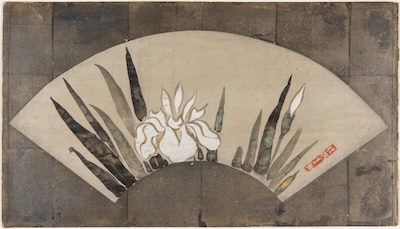The Japanese Rinpa aesthetic, with its emphasis on seasonal flowers and classical literary themes, emerged during the early Edo period (1603–1868) in Kyoto from the courtly arts of painting and calligraphy. Today, Rinpa’s distinctive characteristics—bold coloration, lavish use of gold and silver, innovative brushwork, and a blend of abstract stylization and naturalism—are hallmarks of Japanese art and design.
This focus exhibition explores three key periods in the transmission of Rinpa, highlighting how its repertoire of patterns, motifs, and techniques were continually emulated and reinvigorated by artists working in diverse media. The Rinpa aesthetic coalesced in the work of its most celebrated artist and namesake, Ogata Kōrin (1658–1716), in the early eighteenth century. Reproductions of Rinpa painting, ceramics, lacquerware, and textiles were compiled in woodblock-printed books published in the early nineteenth century that brought Rinpa beyond elite patrons to wider audiences and prompted a major resurgence of the tradition. In response to Japan’s rapid modernization in the late nineteenth and early twentieth centuries, artists refashioned the Rinpa repertoire in gorgeous design books, textile patterns, and prints that revealed nostalgia for tradition and the past within a modern mode.



